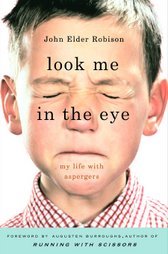This week’s reading assignment discusses three kinds of information we want to provide readers about our characters: physical description, personal history and character analysis. We should know our characters well to write about them convincingly, but the reader needs to know only what’s necessary to follow the story at any given point. In other words, instead of throwing all the food in the tank at one time and killing the fish (boring the reader), we need to sprinkle just enough on the water to keep them alive and coming back for more.
There are 3 primary techniques for characterization; narration, dialogue and action.
Narration involves the author giving information about the character to the reader either directly or through another character’s eyes. This can be a physical description, a personal history that provides perspective about whatever is happening in the story itself or a character analysis where the author or one of the characters tells us what they think of that person.
Dialogue (which will be the subject of our next session) is more active than narration because it allows readers to draw their own conclusions by seeing the character in action or through dialogue.
Showing the character in action can also tell the reader something about their personality. One of the examples in our reading material is, you’re sitting in a movie theater and someone yells, “Fire.” What do you do? Leap over the seat pushing people out of your way as your run for the exit? Help others towards the exit? Sit and finish your popcorn waiting for others to get out first? The point is that people reveal themselves in the way they act. It can be subtle – like how they pour coffee, or dramatic like yelling and screaming. Action also is a way of contrasting what a person says with what they actually do.
The second half of the reading discusses point of view (POV). It refers to the mind of the character through which the story is told. Viewpoints can be either objective – used when the narrator relates facts but avoids emotion – or subjective – incorporating a character’s thoughts and emotions into the story.
First person POV is the narrator telling the story as if it happened to them and uses “I”, “me” and “my”. It’s kind of like reading a person’s diary and can create an instant bond or personal relationship for the reader with the character. The reader experiences things with more immediacy and emotional impact. The danger is in overdoing and revealing too much of the character’s thoughts and opinions to the point of boring the reader.
Second person POV uses the pronoun “you”. They define it as a kind of chiding conscience, the moral super-ego showing the main character what his life has become which usually includes a hind of condemnation. It’s more difficult to engage the reader with this POV and it creates a darker tone.
Third person POV uses “he”, “she” and “they” and can be either omniscient or limited. Omniscient is everywhere at once and told from one character’s POV. Limited gives the perspective of one character at a time. If more than two characters are involved it’s called multiple third person limited. The danger of having too many POV’s is that it can dilute the tension.
So, you identify the character(s) best suited to tell the story and decide on their relationship to the reader. If you’re having trouble, they recommend writing the same passage from several POVs to see which one works best (something Travis discussed recently), but to make sure you only do one character’s POV per chapter.
This is a very brief synopsis of about 50 pages of material that sometimes almost put me to sleep. No offense to the authors, but whew! Anyway, tonight I’ll be working on my assignment which is: Using one of the characters profiled, write 3 different characterization studies focusing on; 1. narrative – only the character’s viewpoint should be used, 2. dialogue and 3. action. Use the same viewpoint character, setting and story for all three.
Feel free to join me. No snoozing allowed!
Monday, February 25, 2008
Subscribe to:
Post Comments (Atom)










4 comments:
Once again, this is all very useful and I am grateful to you for posting it.
I read a contemporary novel recently that that started off in the second person. The reader was addressed as 'you,' though the chapter clearly described the personal experiences of a third party. This created a sense of immediacy and connection with this character, true, but it also drove me wild. I got used to it after a while (the sheer talent of the writer helped), but I breathed a sigh of relief when he finally switched to third person.
One thing I have heard is that kids do not like POV shifts. My first kids' novel had multiple POVs, and I have come to see that this was a huge flaw. It took me ages to work out how to change everything so that there was only one POV -- that of the child protaganist.
I love your professor, and I'm not even taking the class! :*)
As usual great stuff. thanks for sharing and for the mention and link.
Another great post!!! Thanks for condensing this, i can imagine that was challenging in and of itself.
Character description through narration is so so hard (to me). I never know when I sound like I'm babbling crap.
:-)
Post a Comment